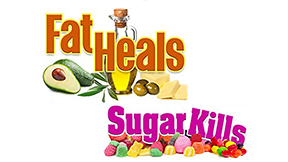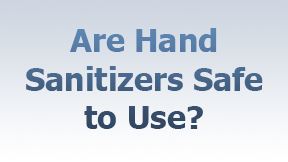 by Dr. Bruce Fife
by Dr. Bruce Fife
Recap of Chapter 2:
Dr. Fife enumerated the importance of fat in our diets. He also explained that if we do not get enough cholesterol in our diets, our livers will produce what our bodies need. He detailed how our ancestors ate real food, but when they started to transition to refined, Western diets, degenerative diseases set in.
Chapter 3
The Heart Disease Epidemic
My Comments: This chapter details one of the greatest health-related tragedies in American history. This is the promulgation of the diet-heart-hypothesis, also known as the lipid or cholesterol hypothesis. The adoption of this misguided hypothesis has only led to increased heart disease, type 2 diabetes, obesity, strokes, and thousands upon thousands of pre-mature deaths.
Starting: In colder climates hunter-gatherers subsisted primarily on meat and fat. Those in warmer climates ate less meat as they had more access to plant food. The human body was well adjusted to eating and thriving on diets rich in saturated fats and cholesterol.
Not only was heart disease extremely rare in these societies, the first documented case of heart disease was in Britain in 1878. Dr. Paul Dudley, Dwight D. Eisenhower’s personal physician, graduated from medical school in 1910. He commented about heart disease being a rare, new disease. Consider these statistics:
1910-1920: 10 deaths per 100,000 per year were due to heart disease.
By 1930: 46 deaths per 100,000 per year due to heart disease.
By 1970 the death rate had increased to 331 per 100,000.
That means that the death rate had increased 30-fold over a 60-year span! By 1950, heart disease had become the number one killer in the US. Fife suggests that the change was due to diet. Researchers in the 1950s noted that wealthier people had more access to fat in their diets, so they thought that fat might be a contributing factor to heart disease.
In 1953 Ancel Keys wrote a paper that gave credence to the connection between fat and heart disease. Keys later refined the idea and came up with the diet-heart-hypothesis. By 1957 he came up with his (in)famous Seven Countries Studies. The gist of it suggested that as the diets in countries had an increased intake of fat, their heart disease rates also went up. Keys had seemingly linked fat intake to heart disease rates.
Keys actually studied 22 countries, but he deceptively threw out results that didn’t conform to his theory. For example, he did not include France and Germany as they had high fat intake but how heart disease rates. Other researchers questioned Keys’ results, but by this time Keys had become a media darling.
The cholesterol hypothesis was immediately hailed as the long-sought cause of heart disease. Many doctors were quick to accept the new hypothesis, as it provided a seemingly logical and convenient answer to the heart disease mystery.
What’s also interesting about Ancel Keys is another study that he did in 1953. He measured the cholesterol levels in men. Twenty-year-old men had a cholesterol level of 190. Seventy-year-old men had a cholesterol level around 265. He discovered that cholesterol levels increased with age. However, this did not fit his cholesterol-heart-disease hypothesis, so he quietly discarded this study.
My Comments: One of the major takeaways I remember from Dr. Stephen Sinatra’s The Great Cholesterol Myth is the meta study (studies of several studies) of the connection between cholesterol levels and all-cause mortality. All-cause mortality means causes of ALL deaths and not just deaths due to heart disease.
The researchers looked at four cholesterol levels. (1) 250+, (2) 200-249, (3) 160-199, and (4) below 160. Those in group (1) had the lowest all-cause mortality while those in group (4) had the highest all-cause mortality. If this is true and if Keys’ discarded study is true, then why are so many doctors still trying to lower the cholesterol levels of their otherwise healthy patients?
Continuing: Keys’ fame from finding what was believed to be the key to heart disease rolled on. He appeared on Time magazine’s front cover. He published his first book, Eat Well and Stay Well, in 1959.
Keys had one problem, however. There was a British research professor, John Yudkin, who was also studying the causes of heart disease. In a nutshell, Yudkin’s studies pointed the finger at sugar, refined sugar, of course.
One way that Keys brushed off Yudkin’s counter claims was by suggesting that sugar was just carbs.
The effects of the different types of carbs wasn’t generally recognized at the time, so sugar wasn’t seriously considered.
Sugar intake doubled from 1909 to 1999, and the type of fats people were eating also changed. Vegetable oil (really seed oil) consumption increased while the consumption of animal fat decreased. Yudkin saw the connection between the increase in sugar consumption and heart disease in modern civilization.
Keys won the battle with Yudkin as Keys vilified him and referred to his studies as a “mountain of nonsense.” He accused Yudkin of issuing “propaganda from the meat and dairy industry.” Never mind the fact that Keys’ main financial backer was the sugar industry. Meanwhile, Yudkin was a mild-mannered university professor simply trying to get the truth out. He was not combative as was Keys. In the end, Yudkin’s scientific reputation was ruined, and he had now become an embarrassment to the University of London.
Keys discarded later studies that showed inconclusive or unfavorable results to his diet-heart-hypothesis. The Minnesota Coronary study found that the greater the drop in cholesterol, the higher the risk of death during the trial. For complete details of the Ancel Keys’ saga, please read pages 33-45.
My Comments: Keys claimed in essence that “science” said his diet-heart-hypothesis was true. First off, science, doesn’t say anything. Scientists, mortal human beings, make claims or assertions, based on conclusions they draw from studying any particular topic.
The lesson to be learned here is that when anyone doggedly asserts that “science says” or “the science behind it says,” we should ask ourselves, What is, if any, the agenda behind what said person is promoting. Keys’ agenda was obviously fame and fortune. He retired a wealthy man. Yudkins’ agenda was seeking out the truth. Generally speaking, the agendas behind the phony science-reliance are either financial, political or both.
Another point to be learned here is to observe how the accuser is actually projecting his own dirty secrets when attacking someone else’s credibility. Keys accused Yudkin of “propaganda” and being supported by the meat and dairy industry. In fact, it was Keys promoting the propaganda, and it was Keys that was secretly being supported by an industrial (the sugar industry) lobbying group.
Continuing: Dr. Fife continues by explaining that the Keys-Yudkin rivalry was far more than just a professional one. It was a carefully orchestrated scheme to discredit Yudkin and his theory. Through Keys, the sugar industry succeeded in diverting suspicion away from sugar as a possible cause of heart disease and placing the blame squarely on saturated fat.
The sugar villains formed their “research” councils and they sponsored conferences. In one conference, Lipton’s Brisk tea, containing 11 teaspoons of sugar per serving, was recommended for diabetes! No kidding!
Yes, the plot was to influence medical research, government agencies, and public opinion. A hidden, re-discovered sugar industry memo acknowledging that sugar is fattening, causes cavities, and causes diabetes outlined the following propaganda campaign: Destroy those “fallacies” and at the same time convince the people of the wholesome qualities of sugar. Among their other villainous deeds, the sugar industry also eviscerated John Yudkin.
Here’s where it went political. Keys got his allies (cronies?) on boards of various governmental and medical organizations to promote the sugar industry’s interests. Among these were:
- American Heart Association (AHA)
- National Institute of Health (NIH)
- S. Department of Agriculture (USDA)
- Center for Disease Control and Prevention (CDC) and others
My Comment: This lesson serves as a good example that it behooves us to perk up our ears when some association, organization, or governmental agency is stridently advocating a certain diet or health position. Again, we should ask, “What’s their agenda?”
The member information mailers from my own Medicare company still parrots the following about diet and nutrition. “Watch your cholesterol and fat intake. Eat lean meats and use sugar moderately.” Cholesterol and fat are still baddies, while some sugar is okay. Why can’t they say, “Avoid all refined sugar and high fructose corn syrup products.” The writers of such publications still have their heads buried in the false sugar industry propaganda from over 50 years ago. Looks like falsehoods don’t die out too quickly.
Continuing: The sugar industry formed (and still does) lofty sounding organization names such as the Food and Nutrition Advisory Council. This council wasted little time in printing up 25,000 copies of an 88-page booklet titled Sugar in the Diet of Man, Theses were distributed to media and other opinion makers. Accompanying those booklets was the headline, “Scientists Dispel Sugar Fears.”
Sugar Propaganda
Dr. Fife quotes some of the verbiage used by sugar promoters in magazine advertisements.
Example 1: 1954 The headline on the ad reads What makes people fat? It then answers the question: People get fat simply because they overeat. Why do they overeat? Because they are hungry. Why are they hungry? One of the reasons…is because their blood sugar level is low. What is the fastest way to raise the blood sugar level and help keep them from overeating? Sugar and the good things containing it.
My Comment: This is as bad as the old 1950s magazine ads that read, “More doctors recommend Camel cigarettes.”
Continuing: Well, duh, a person eats more sugar to raise a falling blood sugar level only to have it crash again due to spiking his blood sugar. Have another doughnut to get your blood sugar up again!
Example 2: 1959 The ad headline reads, “Are you getting enough sugar to keep your weight down?” Then the verbiage says, “Sounds strange until you consider the necessity for appetite control when dieting. How do you curb a king-sized appetite? The easiest way is sugar. No other food satisfies your appetite so fast with so few calories. That’s why you’ll find sugar in many modern reducing diets.”
“Why today’s active women need more sugar…The strenuous life requires energy—the kind sugar provides. That’s why active people who know their energy needs include sugar in their diets.”
“Sugar makes peaches taste peachier! All of us talk about tasting food, but now science tells us that your sense of smell is also very important to your recognition of flavors…”
Fife’s comment, “There you have it. Science proves sugar is better.”
Example 3: 1971 An ice cream a day…Sugar can be the willpower you need to undereat…When you’re hungry, it usually means your energy is down. By eating something with sugar in it, you can get your energy up fast. In fact, sugar is the fastest energy food around. The ad goes on with similar blather.
The Federal Trade Commission would never allow such verbiage today. In fact, the sugar industry’s propaganda is so bad that it’s almost comical. The sad truth, however, is that the country bought into it.
1980 Dietary Guidelines for Americans
Cut back on the consumption of fat, saturated fats, and cholesterol. Avoid excess consumption of sugar, primarily in the form of candy to prevent cavities.
There it is. Saturated fat and cholesterol were demonized while sugar in processed foods got a pass. For sure, this horrible dietary advice was at the hands of Ancel Keys and the Sugar Industry’s minions. And this was all done on the latest scientific evidence!
Sadly, the public as a whole, instead of becoming thinner and healthier, grew fatter and sicker.
 Introduction
Introduction Most readers here have already been on Medicare Part B either recently or for several years. However, maybe you have a spouse/partner, or know someone else who has Medicare Part A (Hospital) but not Part B (Medical). Please pass this information on to those that are needing help to sign up for Medicare Part B. This is especially applicable during this COVID lockdown time when in-person visitation to your local Social Security Administration office has either been difficult or impossible.
Most readers here have already been on Medicare Part B either recently or for several years. However, maybe you have a spouse/partner, or know someone else who has Medicare Part A (Hospital) but not Part B (Medical). Please pass this information on to those that are needing help to sign up for Medicare Part B. This is especially applicable during this COVID lockdown time when in-person visitation to your local Social Security Administration office has either been difficult or impossible. by Lance D. Reedy
by Lance D. Reedy by Dr. Bruce Fife
by Dr. Bruce Fife